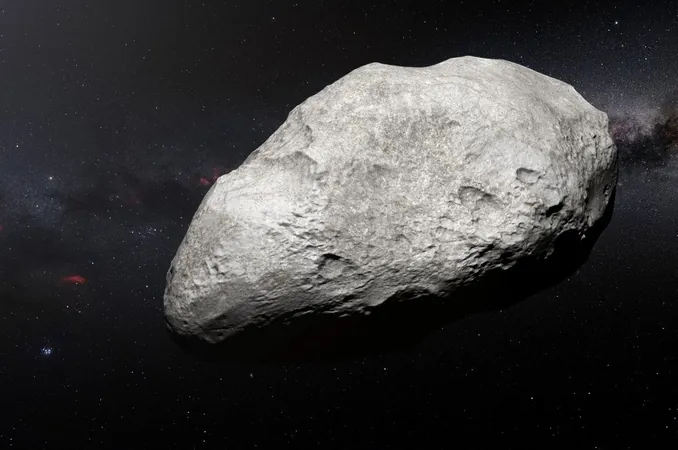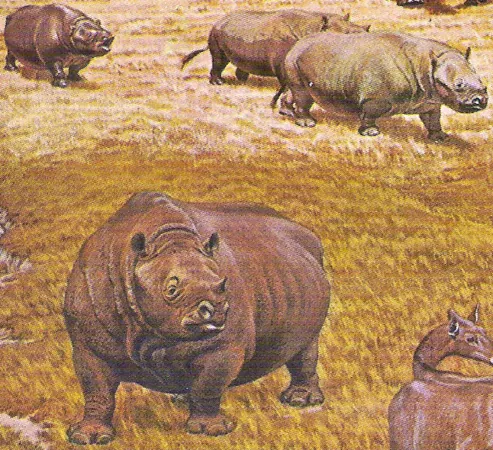
Asteroid 2024 YR4: A Potential Lunar Collision that Could Illuminate Space Science!
2025-04-06
Author: Rajesh
An asteroid capable of unleashing devastation on a city has garnered global attention as new observations reveal an increasing likelihood of it crashing into the Moon. This celestial body, designated 2024 YR4, made headlines in February when it was reported to have a remarkable 3.1% chance of hitting Earth, a figure that shook the planetary defense community to its core.
Quick work by scientists quickly eliminated the daunting possibility of an Earth impact on December 22, 2032. However, the unthinkable has emerged—scientific projections now indicate that the risk of the asteroid colliding with our lunar neighbor has risen to 3.8%, as revealed by NASA after the James Webb Space Telescope scrutinized the asteroid last month.
NASA has reassured the public, noting there remains a 96.2% chance that 2024 YR4 will pass by without incident. Richard Moissl, the head of the European Space Agency's planetary defense office, confirmed this development was in line with internal estimates, marking it as a notable yet manageable risk.
What makes this asteroid particularly fascinating is its size, now estimated to be between 53 to 67 meters (174 to 220 feet)—about the height of a 15-story building. The significance of this size cannot be understated, as it exceeds the crucial 50-meter benchmark that triggers specific planetary defense protocols.
In a hypothetical scenario where the asteroid posed a significant threat to Earth, discussions about deflection missions using nuclear devices or cutting-edge laser technology would already be underway. However, there’s light at the end of the tunnel: NASA’s groundbreaking Double Asteroid Redirection Test (DART) mission in 2022 demonstrated that altering an asteroid's trajectory is indeed possible.
While many hope for the asteroid to take a hit on the Moon rather than Earth, scientists are surprisingly enthusiastic about the potential benefits of such an event. Moissl remarked on the scientific value of observing a significant impact on the Moon, which could yield crucial data beneficial for future planetary defense strategies.
Mark Burchell, an astrobiologist at the University of Kent, hailed the potential lunar impact as “a great experiment and perfect opportunity” for scientific observation. He added that the event would not go unnoticed by telescopes and possibly even amateur astronomers with binoculars.
Interestingly, 2024 YR4 is also a unique target for the Webb telescope, being the smallest object it has ever studied. Early thermal data suggest that it exhibits different characteristics from larger asteroids, likely due to its rapid rotation and an unusual surface texture that lacks fine-grained sand—traits more commonly associated with smaller space rocks.
As anticipation builds, the James Webb Space Telescope is set to observe the asteroid again next month, and further updates on its trajectory and potential impact scenarios are eagerly awaited by both scientists and space enthusiasts alike. The stakes may be high, but the opportunity to deepen our understanding of these ancient wanderers remains an exciting prospect for space science!




 Brasil (PT)
Brasil (PT)
 Canada (EN)
Canada (EN)
 Chile (ES)
Chile (ES)
 Česko (CS)
Česko (CS)
 대한민국 (KO)
대한민국 (KO)
 España (ES)
España (ES)
 France (FR)
France (FR)
 Hong Kong (EN)
Hong Kong (EN)
 Italia (IT)
Italia (IT)
 日本 (JA)
日本 (JA)
 Magyarország (HU)
Magyarország (HU)
 Norge (NO)
Norge (NO)
 Polska (PL)
Polska (PL)
 Schweiz (DE)
Schweiz (DE)
 Singapore (EN)
Singapore (EN)
 Sverige (SV)
Sverige (SV)
 Suomi (FI)
Suomi (FI)
 Türkiye (TR)
Türkiye (TR)
 الإمارات العربية المتحدة (AR)
الإمارات العربية المتحدة (AR)